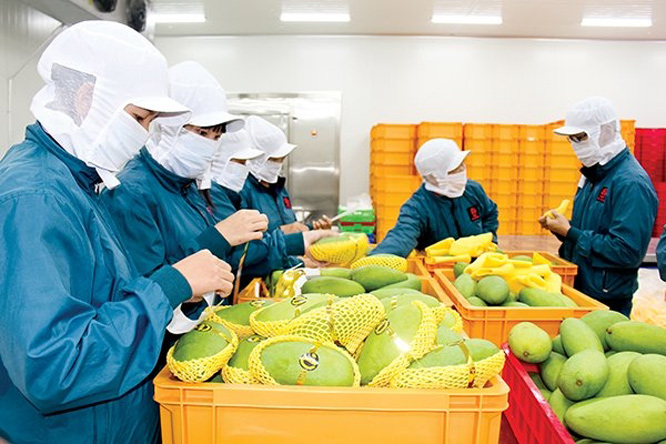Hanoi (VNS/VNA) – Fruit and vegetable exporters should improve their processing technologies, especially in the post-harvest and packaging stages, to preserve their products longer and enhance their value, experts said.

Due to the impact of COVID-19, last year exports fell marginally to 3.26 billion USD.
According to Dang Phuc Nguyen, general secretary of the Vietnam Vegetables Association, new-generation free trade agreements (FTAs) such as the EU-Vietnam Free Trade Agreement (EVFTA), the Comprehensive and Progressive Agreement for Trans-Pacific Partnership (CPTPP) and Regional Comprehensive Economic Partnership (RCEP) are helping Vietnamese businesses increase fruit and vegetable exports this year.
The UK – Vietnam Free Trade Agreement (UKFTA), which came into force late last year made more than 94 percent of vegetables and fruits be exported tax-free, he said.
Many key products such as litchi, longan, rambutan, dragon fruit, and pineapple would benefit since tropical fruits originating from competing countries such as Brazil, Thailand and Malaysia do not have FTAs with the UK, he said.
Experts said to take advantage of opportunities and boost exports, businesses would need to improve the quality of their fruit and vegetable products to meet the standards required by importing markets.
Nguyen Quoc Toan, Director General of the General Department for Agricultural Products Processing and Market Development, said post-harvest losses accounted for 10 percent of rice output, 10-20 percent of root and tuber crops and 10-30 percent of fruits and vegetables.
In the Mekong Delta, Vietnam’s rice bowl, post-harvest losses were worth more than 3 trillion VND (132 million USD) a year, he said.
The country’s preservation methods were basic and outdated, its transport, storage and cold storage were of poor quality, and there were very few deeply processed products, he said.
Packaging farm products also plays a very important role in preserving them after harvest, but Vietnamese businesses do not pay attention to that, according to experts.
Some 70 percent of fruit and vegetable exports is to neighbouring China, mostly in fresh and unprocessed forms.
Little goes to the Republic of Korea, Japan, the US, or the EU because of storage and post-harvest processing limitations.
